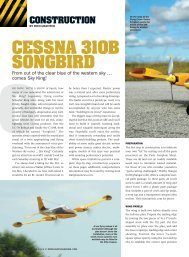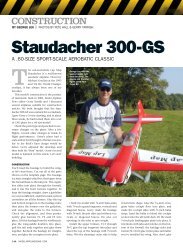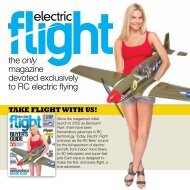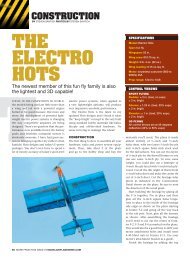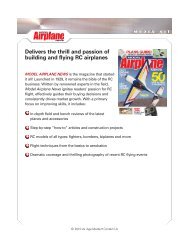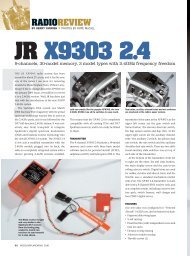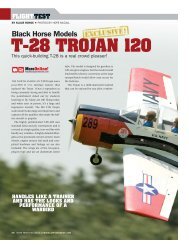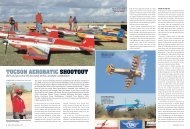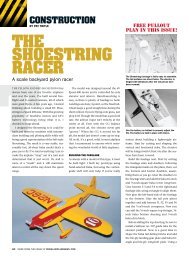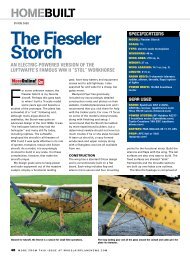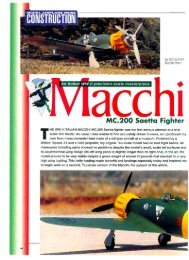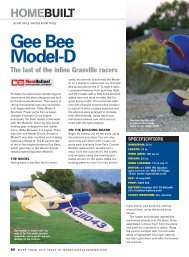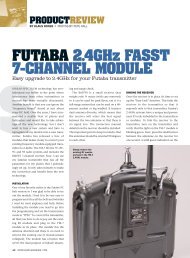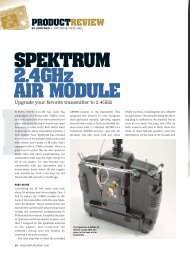You also want an ePaper? Increase the reach of your titles
YUMPU automatically turns print PDFs into web optimized ePapers that Google loves.
CTION<br />
The easiest way to launch your<br />
bird model Is to drop ft from a<br />
mother ship. This way, you can<br />
try out slight modifications and<br />
wing-configuration changes.<br />
Design and Build an<br />
Is Ha model or the real thing? Really hard to<br />
tell—even for real birds!<br />
A turkey vulture that can thermal! by Bob Hoey<br />
odelers have been attempting to build and fly bfrd models for a<br />
time. The challenge of doing this successfully, however, is obvious<br />
i builder-after all, birds have neither rudders nor vertical tails. Over the<br />
last 11 years, I have used RC models to try to understand how soaring birds fly<br />
without vertical tails. I have developed four bird models (Raven, Seagull, Turkey<br />
Vulture and Pelican) that fly reasonably well without vertical fins or rudders. This<br />
research has given me a pretty good understanding of the stability and control of<br />
gliding birds. I can now design glider models of birds that require surprisingly small<br />
design concessions and look quite realistic In flight. The bird's complex control!<br />
methods cannot be duplicated exactly, and our flying ability is limited to _J<br />
dng and controlling from a remote viewpoint, so we may have to cheaj<br />
e to achieve stable, controllable flight. Nevertheless, we can<br />
amlc methods for stability and control.<br />
Blrd-IIke flight Is possible with<br />
model even wHhout a vertical fin<br />
and rudder. The secret Is In the<br />
wingtlp feathers that act like<br />
ailerons to turn the model.



